Puffy Jackets
Made with down or synthetic fibers and paper-thin shells, these puffy jackets weigh less, loft higher, and pack much smaller than fleece.

Rab Generator
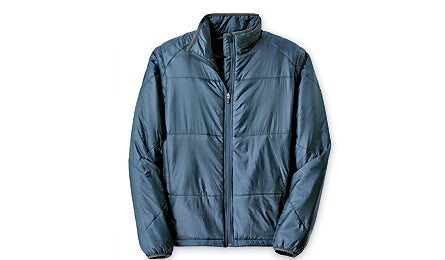
REI Spruce Run/Nevis (W)
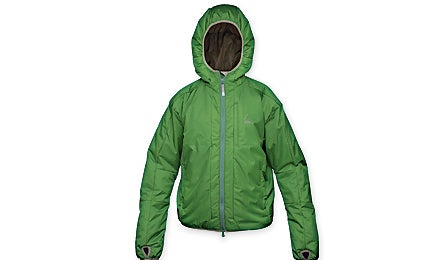
Sierra Designs Chockstone
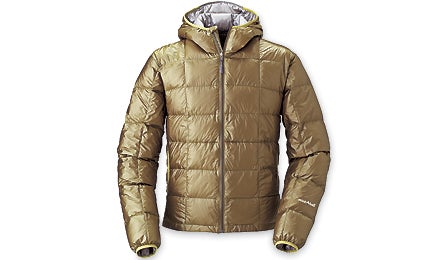
MontBell U.L. Down Inner Parka
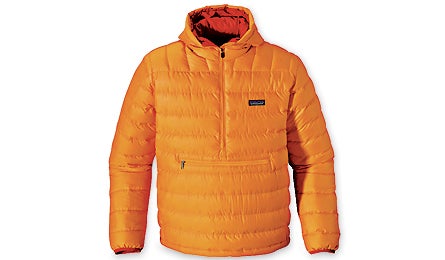
Patagonia Down Sweater Pullover Hoody
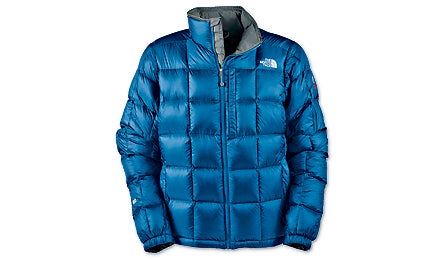
The North Face Flash
Is fleece obsolete? Not quite, but it’s seeing less use among serious backpackers. While the fuzzy stuff still makes sense in very wet climates, weight-conscious hikers are increasingly turning to lightweight insulated jackets for three-season warmth. Made with down or synthetic fibers and paper-thin shells, these tops weigh less, loft higher, and pack much smaller than fleece. Our testers started with more than a dozen models and whittled the field to six top performers.
PUFFY JACKETS
Is fleece obsolete? Not quite, but it’s seeing less use among serious backpackers. While the fuzzy stuff still makes sense in very wet climates, weight-conscious hikers are increasingly turning to lightweight insulated jackets for three-season warmth. Made with down or synthetic fibers and paper-thin shells, these tops weigh less, loft higher, and pack much smaller than fleece. Our testers started with more than a dozen models and whittled the field to six top performers.
SYNTHETIC
Most Compact [35–50°F]
Rab Generator (m)
This Primaloft-insulated jacket is so light and packable (it squishes to grapefruit size) that we had to check the tag to make sure it wasn’t down. The reason: a streamlined design with no hood, no drawcords, and minimal zippers. Instead, simple elastic bands seal the cuffs, bottom hem, and hand pockets. The lining and shell are Pertex Quantum, a silky ripstop nylon that sheds light precipitation and dries quickly. Yet the thin fabric isn’t wimpy; it held up to bushwhacking through scratchy manzanita and juniper in Arizona’s Coconino National Forest. Likewise, the insulation rebounded after being mashed for days at the bottom of a pack. Only complaint: Testers wanted a higher, draftproof collar to compensate for the lack of hood. $150; men’s only S – XXL; 13 oz. (L) rab.uk.com.
Most Versatile [35–65°F]
REI Spruce Run (m) / Nevis (f)
This affordable twofer is a great choice if you want the most flexibility for the smallest investment. One tester took the Nevis, which has zip-off sleeves, on a weeklong spring hike in the Grand Canyon, where temps ranged from 30° to 60°F. “On the trail, I wore it as a vest,” she wrote. “At night, I zipped on the sleeves to crank up the warmth.” It has the same fill and fabrics as the RAB Generator, but many more features: zippers on the three pockets, an iPod portal, and a stuff sack. The trade-off is an extra 5 ounces, but this chameleonlike jacket still packs as small as four bagels, and it fits women better. $149; S–XL; 18 oz. (women’s L). (800) 426-4840; rei.com.
Best Weatherproofing [20–45°F]
Sierra Designs Chockstone
This hooded jacket loves nasty weather. That’s what our testers claimed after they camped in snow, slushy rain, and lows down to 20° on trips in the Grand Canyon and San Francisco Peaks. The hood, the hydrophobic Primaloft insulation, and SD’s rugged Drizone – the most water-resistant shell fabric in the test – get all the credit. Our crew even came to trust the Chockstone as outerwear in light rain. (Because the seams and zippers are not waterproof, it will leak in a harder rain.) The tradeoff for the extra protection is a slightly bigger packed size than other synthetics; it wads up to approximately football shape. The thumb loops on the elastic cuffs keep the sleeves from riding up when you reach out, but our taller testers complained that the short cut let drafts sneak in at the hips. $160; men’s S – XXL, women’s XS–XL; 1 lb. 7 oz. (men’s L). (800) 736-8592; sierradesigns.com.
DOWN
Superlight Sweater [30–50°F]
MontBell U.L. Down Inner Parka
About the same weight as a banana, this item earned kudos as a versatile layering piece – warm enough by itself for summer, and a low-profile boost in winter under a thicker coat. “For most trips, I’d use this as my midlayer instead of fleece,” said one tester after a weeklong winter hike. The lightweight nylon outer shell stopped icy winds, and the 800-fill down trapped body heat as testers lounged around camp at night. With this piece plus a baselayer, we stayed warm down to freezing; with a shell over it, we were fine into the teens. Although we liked the insulated hood, it’s a bit drafty; a drawcord would help here and on the bottom hem, too. The parka stuffs into a softball-sized sack. $155; men’s S – XL, women’s S–L; 8 oz. (men’s L). (877) 666-8235; montbell.com.
Warmth-to-Weight Champ [15–40°F]
Patagonia Down Sweater Pullover Hoody (m)
“Simple. Functional. Toasty.” That’s our verdict on this 800-fill pullover, which forgoes the ventilation of a full-length zipper for an anorak style that delivers maximum warmth for minimum weight. On winter trips in Arizona and Nevada, testers stayed comfortable down into the high teens. The DWR-treated polyester shell blocked 50-mph gusts, and the adjustable hood kept drafts out. The kangaroo-style front pouch is a convenient cubby for frigid fingers, and a separate zippered pocket doubles as a 5×8” stuff sack (and a great pillow). A generous fit allows for up to two layers underneath. Even frugal testers felt that this jacket’s exceptional warmth and durability made it worth the hefty price. Bonus: The fabrics are 50 percent recycled. $249; men’s only XS–XL; 13 oz. (M) (800) 638-6464; patagonia.com.
Warmest [10–35°F]
The North Face Flash
Because of its outstanding compressibility and loft, the Flash became many testers’ go-to jacket for mountain hikes and colder three-season treks. Stashed into its own handwarmer pocket, it disappears into a tiny hydration daypack for dayhikes. Yet its impressive warmth and durability make it just as useful for extended winter outings. This ultra-lofty 850-fill jacket has unusually small baffles that keep the down in place through many stuffings and unstuffings. The ripstop nylon shell is soft and thin, which aids in packability and layering. And a high, fleece-lined collar cozies up to your chin. It’s hoodless, but for hikers who run hot, the Flash could easily serve for light mountaineering. $229. men’s and women’s S – XL; 17 oz. (men’s L). (800) 447-2333; thenorthface.com.